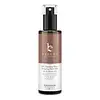What's inside
What's inside
 Key Ingredients
Key Ingredients

 Benefits
Benefits

 Concerns
Concerns

 Ingredients Side-by-side
Ingredients Side-by-side

Water
Skin ConditioningPropylene Glycol
HumectantDihydroxyacetone
Skin ConditioningPEG-6 Caprylic/Capric Glycerides
EmulsifyingCaramel
Cosmetic ColorantDihydroxypropyl PEG-5 Linoleammonium Chloride
PEG-7 Glyceryl Cocoate
EmulsifyingPhenoxyethanol
PreservativeCaprylyl Glycol
EmollientPotassium Sorbate
PreservativeHexylene Glycol
EmulsifyingArgania Spinosa Kernel Oil
EmollientMacadamia Integrifolia Seed Oil
Skin ConditioningCocos Nucifera Oil
MaskingSimmondsia Chinensis Seed Oil
EmollientRosa Canina Fruit Oil
EmollientVitis Vinifera Seed Oil
EmollientPersea Gratissima Oil
Skin ConditioningCucumis Sativus Fruit Extract
EmollientAscorbic Acid
AntioxidantTocopheryl Acetate
AntioxidantCI 19140
Cosmetic ColorantCI 61570
Cosmetic ColorantCI 16035
Cosmetic ColorantCI 17200
Cosmetic ColorantCI 42090
Cosmetic ColorantCI 15985
Cosmetic ColorantWater, Propylene Glycol, Dihydroxyacetone, PEG-6 Caprylic/Capric Glycerides, Caramel, Dihydroxypropyl PEG-5 Linoleammonium Chloride, PEG-7 Glyceryl Cocoate, Phenoxyethanol, Caprylyl Glycol, Potassium Sorbate, Hexylene Glycol, Argania Spinosa Kernel Oil, Macadamia Integrifolia Seed Oil, Cocos Nucifera Oil, Simmondsia Chinensis Seed Oil, Rosa Canina Fruit Oil, Vitis Vinifera Seed Oil, Persea Gratissima Oil, Cucumis Sativus Fruit Extract, Ascorbic Acid, Tocopheryl Acetate, CI 19140, CI 61570, CI 16035, CI 17200, CI 42090, CI 15985
Aloe Barbadensis Leaf Juice
Skin ConditioningDihydroxyacetone
Skin ConditioningHyaluronic Acid
HumectantGlycerin
HumectantVitis Vinifera Seed Extract
AntimicrobialHamamelis Virginiana Extract
AntiseborrhoeicCamellia Sinensis Flower Extract
PerfumingCucumis Sativus Fruit Extract
EmollientPunica Granatum Extract
AstringentRosmarinus Officinalis Extract
AntimicrobialChamomilla Recutita Flower Extract
MaskingCalendula Officinalis Flower Extract
MaskingCitrus Sinensis Peel Oil Expressed
PerfumingCitrus Grandis Peel Oil
MaskingMentha Piperita Oil
MaskingLeuconostoc/Radish Root Ferment Filtrate
AntimicrobialLactic Acid
BufferingAloe Barbadensis Leaf Juice, Dihydroxyacetone, Hyaluronic Acid, Glycerin, Vitis Vinifera Seed Extract, Hamamelis Virginiana Extract, Camellia Sinensis Flower Extract, Cucumis Sativus Fruit Extract, Punica Granatum Extract, Rosmarinus Officinalis Extract, Chamomilla Recutita Flower Extract, Calendula Officinalis Flower Extract, Citrus Sinensis Peel Oil Expressed, Citrus Grandis Peel Oil, Mentha Piperita Oil, Leuconostoc/Radish Root Ferment Filtrate, Lactic Acid
Ingredients Explained
These ingredients are found in both products.
Ingredients higher up in an ingredient list are typically present in a larger amount.
This extract comes from cucumber. Cucumbers are mostly made up of water (95%), and the other 5% is composed of: vitamin C, caffeic acid, fatty acids, amino acids, and other minerals.
Cucumbers have anti-inflammatory, barrier repair, and hydrating properties.
They contain shikimate dehydrigenase, an enzyme shown to help reduce inflammation and soothe the skin.
The amino acids found in cucumbers help nourish our skin's natural acid mantle (it's an important part of our skin barrier). This slightly acidic film acts as a barrier to protect us from bacteria, viruses, and other contaminants.
Unless you have an allergy to cucumbers, this is generally a non-irritating ingredient.
Fun fact: Cucumis Sativus is native to South Asia and can now be found on every continent.
Learn more about Cucumis Sativus Fruit ExtractDihydroxyacetone, or DHA, is a simple sugar. It is frequently used in self-tanning products.
DHA binds to the amino acids in your dead skin cells to create a brown/orange color. Darkening begins to kick in a few hours after application and will continue to develop for up to 3 days. This ingredient can be drying.
Both the US and the EU have approved DHA in self-tanning products. In the EU, DHA is allowed at a maximum concentration of 10%. Most tanning products usually contain amounts between 3-5%.
If you are pregnant or have underlying medical conditions, it is best to speak with a dermatologist about using self-tanning products.
Learn more about Dihydroxyacetone